Field Review: Retra Flash by Alex Mustard and friends
RETRA Flash – Field Review
By Alex Mustard and others
INTRODUCTION
The Retra Flash is big news: a brand new strobe and a new manufacturer joining the underwater strobe market are rare events indeed. And with the flash is on schedule to start shipping to pre-order customers from Friday (22 September 2017) it is high time for a detailed review on Wetpixel.
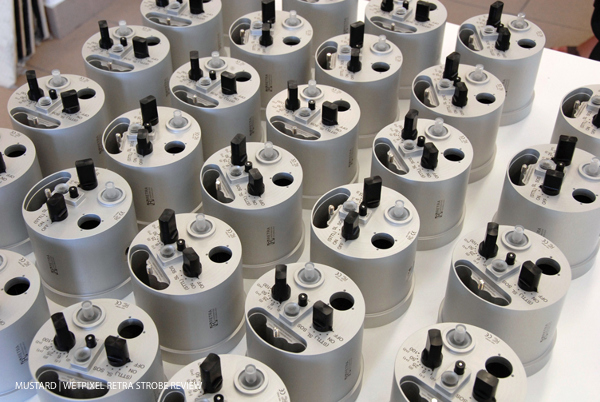
Retra, as most serious shooters already know, are the European company behind the widely used LSD (Light Shaping Device - their optical snoot) and other innovative accessories, such as the uTrigger underwater remote release. Yet, however you break it down, stepping up to building a sector leading and reliable strobe is a serious undertaking, especially because, given its specs, the strobe is likely to appeal to so many underwater photographers.
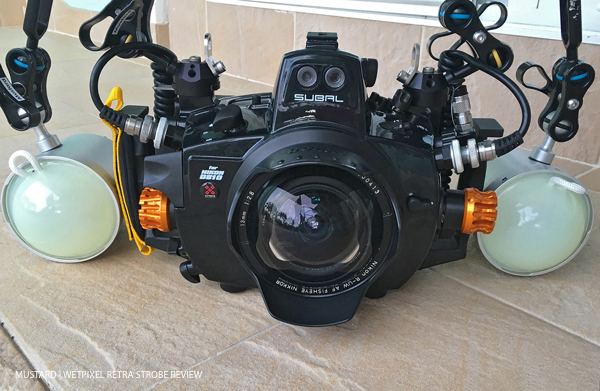
The Retra Flash is clearly pitched as a straightforward performance upgrade for photographers currently shooting INON Z240, Sea & Sea D1/D2 type strobes. It is a similar size to both (my INON Z240 weighs 670g, the Retra weighs 722g on my kitchen scales), but has noticeably more oomph at 100W/s, with a wider spread of warm, soft light. It is well timed too, since many photographers love their INONs in particular, but have often given them years of hard labour and yearn for something new and with a bit more horsepower.
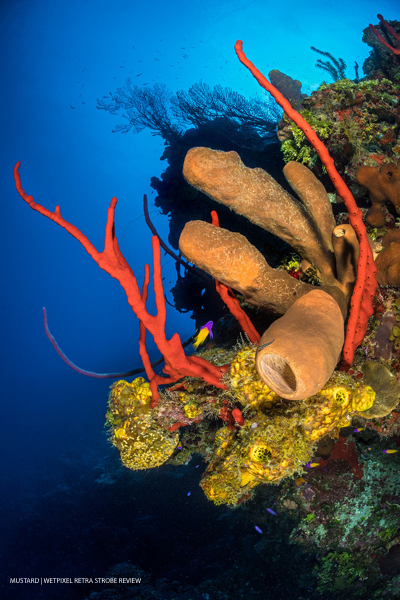
The Retra may have similar proportions to its Japanese rivals, but it looks very different, being made from tough and attractive aluminum. It has connectors for both fibre and electronic flash triggering. Happily, it will accept any of the INON, Sea & Sea or Nauticam fibre optic cables (offering sTTL, and manual shooting with and without pre-flash) and comes as standard with a Sea & Sea electronic synch socket (the same as INON Z240 and Sea & Sea strobes). The Retra can be ordered instead with an S6, Nikonos 5 pin or Ikelite 5 pin sockets for electronic flash synch. Furthermore, it even takes 4 x AA batteries, meaning upgraders can continue with the same batteries, chargers, cables etc.
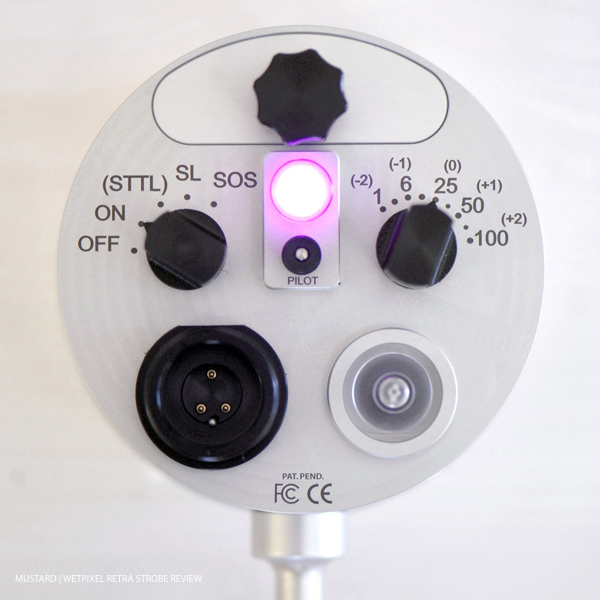
FULL DISCLOSURE
The Author, Alex Mustard, has collaborated with Retra for several years and has been one of the photographers feeding ideas into their flash project since its earliest days. Alex has also done field-testing of the pre-production flashes (in the Red Sea) and production spec strobes (in Cayman and Cuba). That said, Alex is keen to point out that he is not on Retra’s payroll and does not benefit in any way from sales. Alex also lent the strobes to several photographers (Valerie Reid (VR), Horacio Martinez (HM), Robert Smits (RS), Peter Berndt (PB), Josef Litt (JL) and Nick More (NM)) on his workshops and their thoughts and images are also included here.

FOCUS ON LIGHT
Retra’s General Manager, Oskar Zupancic, explains the genesis of the flash: “Making the LSD taught us lots about existing light sources and different qualities of light. As underwater photographers we felt we could bring something new to the strobe market with, although it sounds slightly funny, a strobe fully focused on quality of light.”
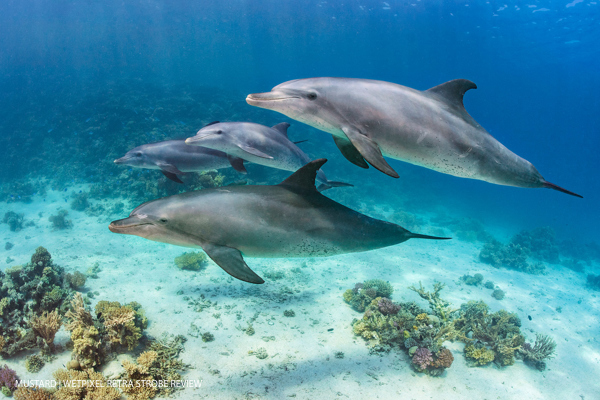
Light is the Retra Flash’s trump card. The Retra offers a considerable jump in power over its rivals. RS: “The recycle time of the strobe is a little bit better than the Z240”. JL: “I used the Retra’s on half power, while I had to use the INONS on 11 or full to light a reef scene.”
However, it is the quality of light that I found more exciting, especially with the domed wide angle diffuser (included with the strobe) that the flash tube and reflector have been optimised to work with. The specs say the diffuser warms the light to 4500K and spreads it to cover 130˚, underwater this translates to attractive soft, wide light that is both more forgiving to use and more flattering on most subjects. NM: “I was impressed with the power and quality of light, even shooting into a bright sunball”. While warm light doesn’t just improve skin tones, it also improves the blues of our backgrounds.
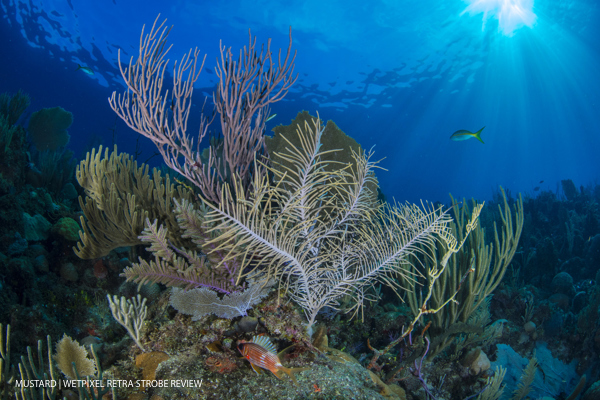
An attractive feature of the strobe is that the diffuser mounts via a bayonet. Not only is this very secure and easy to use, it has allowed Retra to build a variety of different accessories, so that photographers can shoot with hard or soft light, warm or cool light, or even help it reach further for lighting bigger scenes. VR: “diffusers have a well designed mounting system, the dome differs do not fall off as is commonly the case with others”, HM: “brilliant system to change diffusers and a good choice – the Shark diffusers definitely a worthwhile addition”.
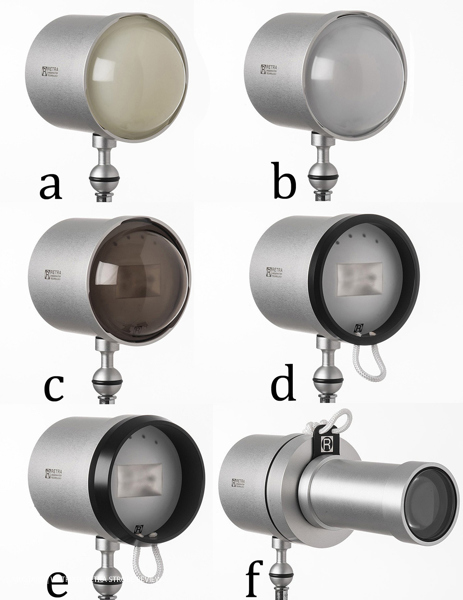
a) the Wide Angle Diffuser (included) is designed for standard and close focus wide angle in blue water and is also good for fish portraits and macro,
b) the White Diffuser is for standard and close focus wide angle in green water,
c) the Shark Diffuser is designed to warm the light, but not diffuse it too much to help it light more distant subjects, like sharks, schools of fish and large reef scenes,
d) the Protection Ring is to protect the front of the strobe when shooting without diffusers, such as for macro or Crossed Strobes lighting,
e) the Reduction Ring reduces the angle of the beam, a common technique for reducing backscatter on low visibility dives, the sharp edge to the beam is also useful for Inward Lighting,
f) the Light Shaping Device (LSD) an optical snoot.
Most photographers will stick with one option per dive (and the standard wide angle diffuser should be your default), but it is easy (without thick gloves) to change them underwater and alter the quality of light to suit the subject and effect you are after. I think we can expect Retra (and perhaps other companies) to release even more options over time.

ERGONOMICS
Retra’s other key strength is that they have reached out for opinions and listened. “We asked several leading underwater photographers what they would like to see in an ideal strobe and their advice was the foundation of the design and specifications,” explains Oskar. “And then when we went public with the prototype at the start of the year, we received more feedback from the UW photo community and refined the design further.”

The result is that the strobes are intuitive to use and packed with neat features that really enhance their ergonomics in the field. For example, the two control knobs on the back are different lengths, so that you can distinguish them without looking, turning the longer one to adjust strobe powers. VR: “I really like how I can ‘feel’ the clicks as I change the power settings”, HM: “Easy to manage controls”, RS: “The settings are easily changed and the look and feel of the strobe is very nice”.

The ready light is different colours depending on mode, giving you instant reassurance you are in the right one, and is positioned to illuminate the dials in the dark. When you turn the strobe on, the remaining battery power is usefully displayed across 4 LEDs on the front panel. And the strobe has a central aiming or pilot light with different power settings that includes a bright 300 lumen level to aid aiming the LSD in daylight. I’ve not tried the strobe with the LSD yet. JL: “I do not like the misaligned light on my INONs when using the LSD”, The pilot light button also controls a few hidden features. For example in the ON mode (for electronic synch) it can be pressed and held in for four seconds to cancel the strobe ready beep noise. While in SL mode (for fibre optic synch) the same button enables a smart pre-flash mode, that senses the type of pre-flash your camera gives and adapts the strobe to it.
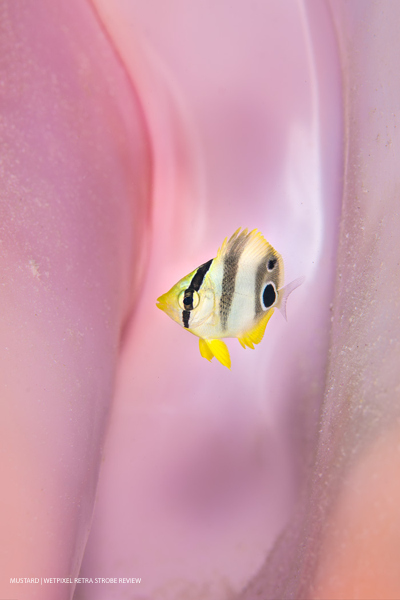
An unusual, although enticing option is the battery pack extender, which bolts very securely in place of the standard battery compartment door and increases the battery capacity from 4xAA to 8xAA, doubling the battery life and halving the recycle time. I tried this in the Red Sea, but didn’t use it in the Caribbean because recycle times was not an issue. For normal reef diving, we rarely shot them at full power and therefore there was no noticeable wait for recycling. NM: “the recycling times were good shooting at half power”, PB: “they were more powerful and had a faster recycling time than my INONs”.
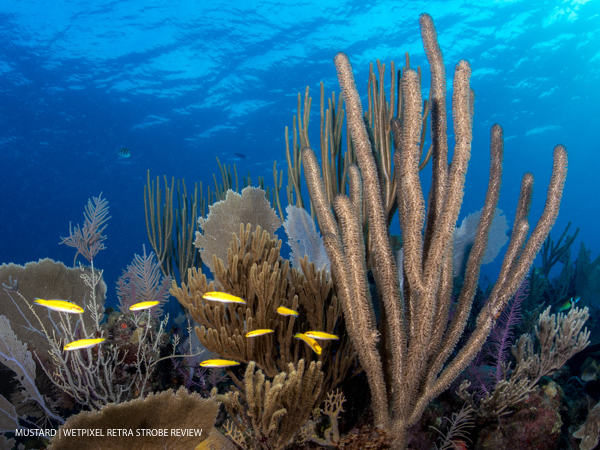
Myself and 8 other photographers shot with the strobes with different Nikon and Canon SLRs, crop sensor and full frame. The strobes were triggered electronically and through fibre (triggered using pop-up flash, LED circuit board and Nauticam’s flash trigger) and they worked reliably with all. In Cayman alone I shot them with D5, D810 and D7200, triggered with both electronic and fibre with the last two. To test how intuitive the Retras are to use I didn’t let anyone read the instructions! I just told them what mode to use (ON for cables, SL for fibres) and let them figure out the rest. Which they all did - the Retra’s controls are logical and NM: “easy to use.”
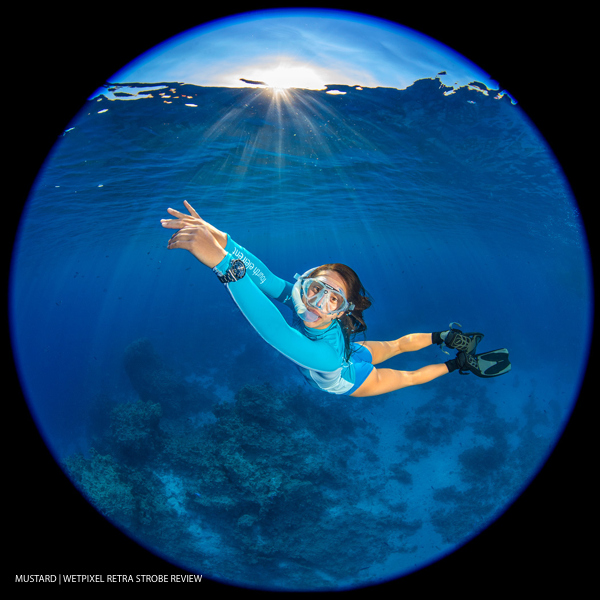
ANY PROBLEMS?
PB and RS commented that the battery compartment was difficult to fit and unscrew and HM added; “without definite open and closed positions.” JL found the strobe sensitive to old batteries: “I had one battery set that was not top notch and the strobe kept switching off.” This problem disappeared with newer rechargeable AAs. The unattributed Frank Zappa quote that is engraved inside the battery compartment confused everyone!
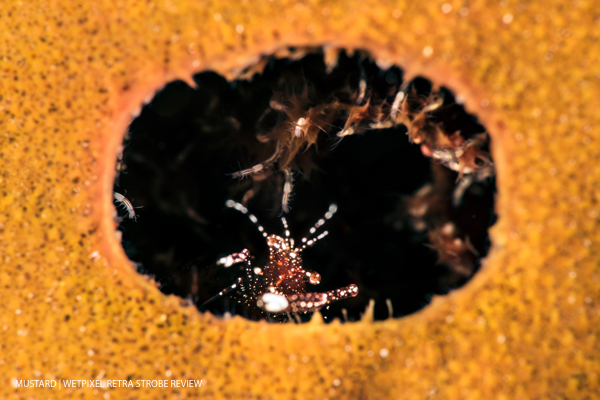
One of the synch sockets on my Subal ND5 housing was flooded, yet continued to work with my Seacam strobes. However, it stopped my camera working reliably with the Retra flashes and Sea & Sea cables in the Caribbean. This was a housing issue because the Retras worked fine with the same cables and housing in the Red Sea. The strobes also worked perfectly with the same cables on a Subal ND810 housing lent to me by Predrag Vuckovic.
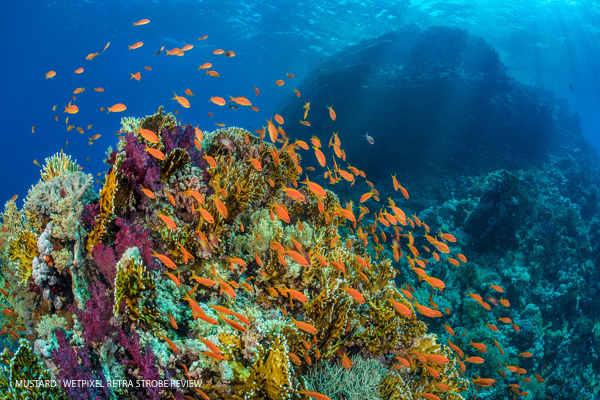
Finally, the strobes did not have the TTL circuitry enabled during our tests. Like other strobes the Retra is designed to perform s-TTL, controlled via fibre optic by the on camera strobe. Retra have conducted lengthy TTL testing and sent me the results below comparing the sTTL performance of their strobe and Z240 and D2. An effective TTL system should create a correct flash exposure and keep it consistent as the camera settings are changed. All the strobes below have functioning TTL, although with varying ranges that they produce optimum results.
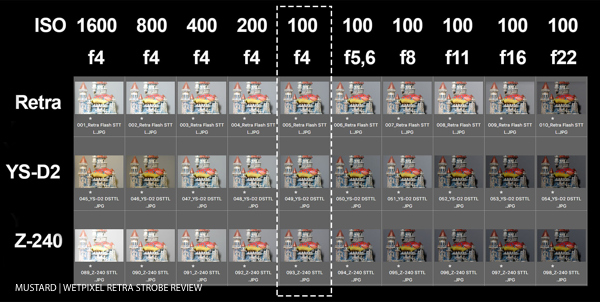
The question I cannot answer in a review like this concerns reliability. Strobes are complicated and the higher the performance the more the electronic design is tested. This is perhaps the main reason why we see so many manufacturers of arms, clamps and dioptres and so few who make underwater strobes! What I can say is that the strobes took the abuse we threw at them. And that Retra have submitted the strobes to a series of tests that massively outstrips any usage they would get in the real world. For example, Oskar told me of one test where they fired “the strobe on repetitive 100% power flashes, which would destroy the lamp or damage the electronics of any strobe out there, due to overheating. We made a series of 1000 full power flashes with just a 2 second interval between them without problem. The aluminium housing helps cool the electronics and the use of a high quality quartz glass lamp prevents the glass from melting under extremely high temperature.”
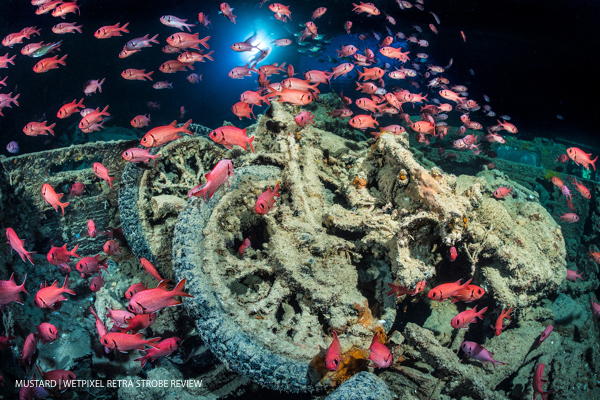
CONCLUSION
Retra have clearly hit their goals of producing a small, yet powerful strobe, that looks great and has a real focus on quality of light. The first thing you notice is the power, but as you look properly at your images you appreciate the quality of light too. The more you shoot them, the more enticing the ability to change your quality of light becomes and this is artistically empowering. All the photographers who tried them felt they clearly outperformed their current strobes (NM: “I am impressed”), but whether you should upgrade will depended on whether you need more power, and/or how old you current strobes are. If you’ve just invested it is harder to justify, JL: “I would not upgrade to them, but I would choose them over my INON Z240s”, VR: “Retra Flashes will be my next new strobes, I am so impressed that I will purchase them.”
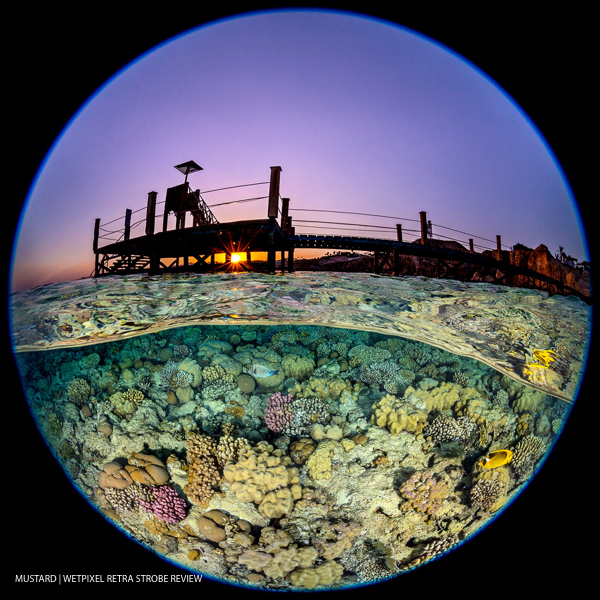
The Retra Flash begins shipping this week and it is currently available for pre-order from the manufacturer at €699 Euros, which includes worldwide express shipping, wide angle diffuser, neoprene protective cover, 1” mounting ball and 2 Year Warranty from Retra. Note that if you live in the EU you will also have to add 22% sales tax. If you live outside the EU, you may have to pay import duty.
ABOUT THE AUTHOR
Alex Mustard is the author of the best-selling Underwater Photography Masterclass, his images have won many major awards and our published worldwide. He is associate editor of Wetpixel.